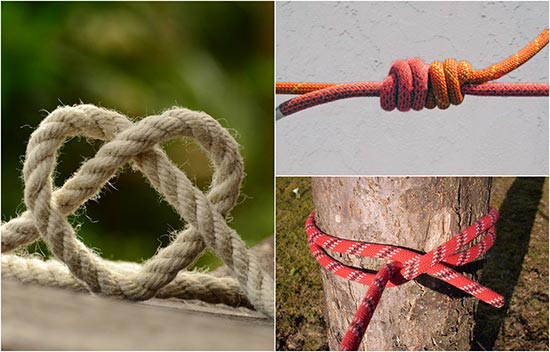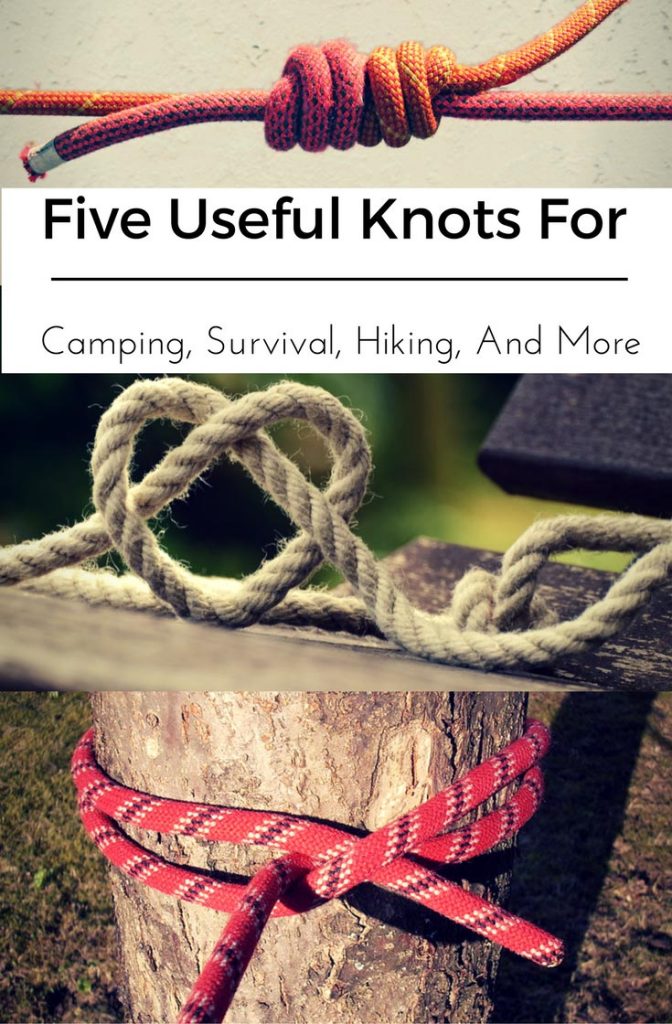Five Useful Knots For Camping, Survival, Hiking, And More
Master These 5 Essential Knots for Camping, Survival & Hiking
When you’re out in the wild, knowing how to tie the right knot can be a literal life-saver. Whether securing shelter, hauling gear, or setting up safety lines, these five versatile knots will serve you well. Below, you’ll find what they are, how to tie them, why they’re useful, and pro tips to make your outdoor adventures smoother.
1. Bowline – The “King of Knots”
- What it does: Creates a reliable, fixed loop at the rope’s end that’s easy to untie even after heavy use Wikipedia.
- How to tie: Make a small loop (“rabbit hole”), thread the working end (“rabbit”) through the hole, around the rope (“tree”), and back down the hole. Tighten.
- Why it matters: Ideal for rescue, hoisting, or securing gear—trustworthy and easy to undo Wikipedia.
- Pro tip: Dress the knot neatly and test it—better safe than sorry!
2. Taut-Line Hitch – The Adjustable Anchor
- What it does: A sliding hitch that allows you to tighten or loosen lines without untying Coghlan’scoolofthewild.com.
- How to tie: Wrap the rope around a post/tree, make two wraps inside the loop, then another outside the first two. Pull tight and slide to adjust tension.
- Why it matters: Ideal for tent guy lines, tarps, or makeshift drying lines.
- Pro tip: Use with nylon or paracord for a secure grip that remains adjustable.
3. Clove Hitch – Quick & Practical
- What it does: Fast way to attach rope to poles or trees Wikipedia.
- How to tie: Wrap around an object, cross over the first wrap, wrap again, and tuck under. Pull tight.
- Why it matters: Perfect for starting lashings, setting up temporary lines, or anchoring hammocks.
- Caution: Can slip if uneven load or on flat surfaces. Add a half hitch for extra security Wikipedia.
4. Square Knot (Reef Knot) – The Simple Binder
- What it does: Joins two roughly equal rope ends for bundling or temporary holds Coghlan’scoolofthewild.com.
- How to tie: Cross right over left and under; then left over right and under. Pull to tighten.
- Why it matters: Great for tying bandages, securing firewood, or bundling gear.
- Caution: Not to be used under high tension or for critical loads—can slip.
5. Sheet Bend – Joining Uneven Ropes
- What it does: Efficiently joins two ropes of different thickness with minimal bulk Paria Outdoor Products.
- How to tie: Form a loop in the thicker rope. Pass the thin rope’s end through, wrap around both parts of the loop, then tuck under itself.
- Why it matters: Handy when you need a longer line or patch together broken cordage.
- Pro tip: Use a double sheet bend (one extra wrap) for added security.
Why These Are Game-Changers
- Versatility: From securing shelters and gear to emergency rescues, these knots handle a range of scenarios.
- Confidence: Mastering them improves efficiency and safety on hikes and camps.
- Portability: All you need is a bit of rope and practice—no fancy gear required.
> Quick Reference Table
| Knot | Purpose | Best Use Case |
|---|---|---|
| Bowline | Fixed loop, easy to untie | Rescue, hanging gear |
| Taut-Line Hitch | Adjustable tension | Tent guylines, tarps |
| Clove Hitch | Fast attachment to objects | Hammocks, lashings |
| Square Knot | Simple join for same-size lines | Bundling firewood, straps |
| Sheet Bend | Join different ropes | Extending or repairing lines |
Bonus Knot: Prusik
For anyone wanting to go a step further:
- What it does: A friction hitch that grips under load and slides when released Wikipedia.
- Uses: Ideal for adjustable ridge lines, pulley systems, or emergency climbing aids.
- How it works: Wrap a looped cord several times around the main line. Under tension, it locks; with slack, it slides.
 Home and Gardening Ideas At home and Gardening ideas we believe inspiring readers about homesteading, self sufficiency
Home and Gardening Ideas At home and Gardening ideas we believe inspiring readers about homesteading, self sufficiency








